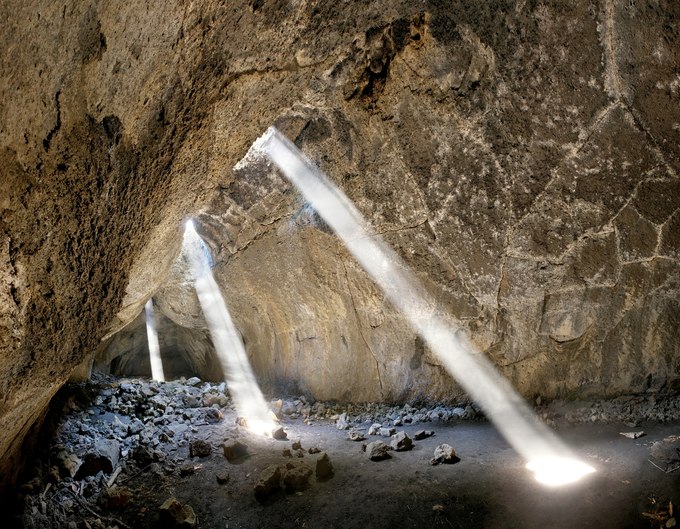NASA researchers once tested space suits in Skylight Cave – a central Oregon lava tube – as it was thought to be representative of “extraterrestrial” caves on the Moon, Mars, and other planets. This earthly cave once offered shelter to indigenous peoples, and every winter, it hosts hibernating Townsend's long-eared bats. On the June morning this scene was captured, I was greeted by other unexpected visitors: a couple having wedding pictures made; the bride lit by a light beam that descended through an opening in the cave's ceiling, her raised hand silhouetted by a sunray.
Three shafts of sunlight illuminate this cave during late mornings from May to September. The light enters through hornitos ("little ovens" in Spanish), where lava once erupted out of the cave’s ceiling. Several thousand years ago, this cave served as a subterranean conduit for fast-moving molten basalt. The outer surface of this molten rock cooled to a solid crust while its hotter, insulated lava continued flooding downstream.
After the flow ceased, it left a long, hollow channel, its appearance today unchanged. Entering the 40-degree Fahrenheit cave, the narrow walls, low ceiling, and precarious footing compelled me to crouch as I cautiously walked through the dark, headlight in hand. Finally, ahead, an inviting glow appeared that revealed the outline of the floor, walls, and ceiling as I entered a large hall. The subterrestrial met the celestial as the sun reached into the dusty cave, revealing a chamber etched by cracking walls and littered with fallen rocks. By happenstance, the nearest shaft cast a heart-shaped glow on its floor.
- James Baker

